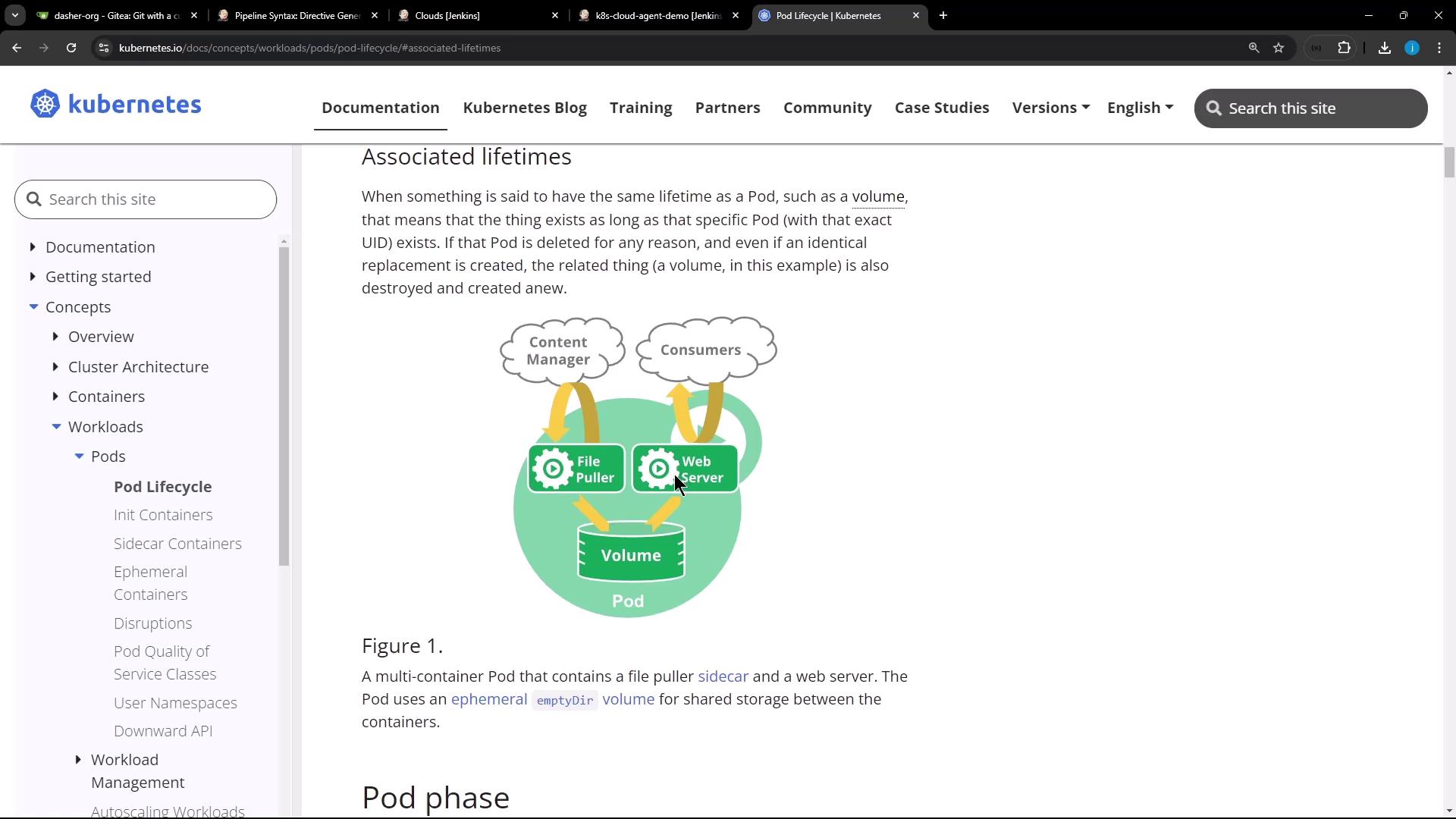Certified Jenkins Engineer
Pipeline Enhancement and Caching
Demo Sharing a file between containers
In Kubernetes, all containers in the same Pod share the same filesystem volume. This demo shows how one Jenkins pipeline stage writes a file in an Ubuntu container, and a subsequent stage reads it in a Node.js container—both running side by side in the same Pod.
Prerequisites
- A Jenkins server with the [Kubernetes Plugin][] and [Blue Ocean][] installed.
- A connected Kubernetes cluster configured as a cloud agent.
Jenkinsfile Overview
The following Jenkinsfile defines two stages: one running on Ubuntu, the other in a Node.js sidecar. They share the workspace via an emptyDir volume.
pipeline {
agent any
stages {
stage('Write File in Ubuntu') {
steps {
// On the default Ubuntu container
sh 'hostname'
sh 'echo important_UBUNTU_data > ubuntu-${BUILD_ID}.txt'
sh 'ls -ltr ubuntu-${BUILD_ID}.txt'
sh 'sleep 60s' // keep the Pod alive briefly
}
}
stage('Read File in Node.js') {
steps {
container('node-container') {
sh 'node -v'
sh 'npm -v'
// List and display the same file
sh 'ls -ltr ubuntu-${BUILD_ID}.txt'
sh 'cat ubuntu-${BUILD_ID}.txt'
}
}
}
}
}
Executing the Pipeline
When this pipeline runs, Jenkins dynamically provisions a Pod with two containers—ubuntu-container (default) and node-container (sidecar)—sharing an emptyDir workspace volume.

Under the hood, the Pod specification looks like this:
apiVersion: v1
kind: Pod
metadata:
name: k8s-cloud-agent-demo
spec:
restartPolicy: Never
volumes:
- name: workspace-volume
emptyDir: {}
containers:
- name: ubuntu-container
image: ubuntu:latest
volumeMounts:
- name: workspace-volume
mountPath: /workspace
- name: node-container
image: node:18
volumeMounts:
- name: workspace-volume
mountPath: /workspace

Pipeline Log Example
The log below confirms the file created in the Ubuntu container is accessible in the Node.js container:
[Pipeline] stage
[Pipeline] { (Write File in Ubuntu)
+ hostname
k8s-cloud-agent-demo-5-rv7b8-8frt0-n41pw
+ echo important_UBUNTU_data > ubuntu-5.txt
+ ls -ltr ubuntu-5.txt
-rw-r--r-- 1 root root 22 Nov 10 09:47 ubuntu-5.txt
[Pipeline] // stage
[Pipeline] stage
[Pipeline] { (Read File in Node.js)
+ node -v
v18.20.4
+ npm -v
6.14.17
+ ls -ltr ubuntu-5.txt
-rw-r--r-- 1 root root 22 Nov 10 09:47 ubuntu-5.txt
+ cat ubuntu-5.txt
important_UBUNTU_data
[Pipeline] // stage
Static Nodes vs. Dynamic Agents
You can run Jenkins jobs on:
| Agent Type | Description | Pros | Cons |
|---|---|---|---|
| Static Node (VM) | A long-running machine with preinstalled tools. | Always available; ideal for specialized builds | Idle resource costs; manual maintenance required. |
| Docker Agent | Containers spun per job and removed when done. | Custom images; resource-efficient | Requires Docker environment setup. |
| Kubernetes Cloud Agent | Pods created on demand, destroyed after completion. | Auto-scaling; shareable volumes per Pod | Kubernetes cluster required; plugin configuration. |
Tip
Dynamic agents help you package toolchains into container images, cutting down on idle resources and improving build scalability.
Further Reading
Watch Video
Watch video content